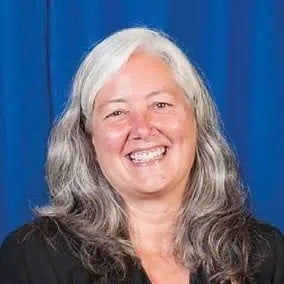Meditation, Ideal Treatment, and the Lowdown on Hocks
I just finished reading the book “Meditation Is Not What You Think” by Jon Kabat-Zinn and he talked about being at a retreat and the yoga teacher asked him “How is the world treating you?” and then asked “And how are you treating the world?”. This was a profound statement for me! My immediate thought went to “How is the dog show world treating you?” and judging by the posts I’ve seen recently many are saying “not well” so ”how are you treating the dog show world?”.
These questions are so intertwined yet many people only look at one side—how is the dog show world treating you! Whenever you think the dog show world isn’t fair or isn’t treating you fairly, please turn it around and ask yourself what are you doing to improve this beautiful world
we’re involved in?
Probably the most commonly used term in dogdom, outside of “champion,” is “hocks.”
AKC and CKC have very similar definitions for “Hock,” and several conditions which may present, and yet there’s still confusion. Let’s take a moment to review:
The Hock is the collection of bones of the hind leg forming the joint between the second thigh and the metatarsus; the dog’s true heel. Cow-hocked is Hocks turning in, accompanied by toeing out of rear feet. Sickle Hocked is described as the inability to straighten the hock joint on the back reach of the hind leg. (CKC adds: Also, hocks too bent, shaped like a sickle.) Hocking out is spread hocks; Hocks well let down is Hock joints close to the ground. Barrel hocks: Hocks that turn out, causing the feet to toe in. Also called spread hocks. Bow hocks: Outward curvature of the hindlegs, the hocks turning outward. The opposite of cow-hocked.
Luxating hocks: Luxation (completely out of alignment or position) or subluxation (looseness) and/or hyper-extension of the hock joint; often referred to as “slipped” hocks, or to the hocks being described as double-jointed. Snatching hocks: A gaiting fault indicated by a quick outward snatching of the hock as it passes the supporting leg and twists the rear pastern far in beneath the body. The action causes noticeable rocking in the rear quarters. Spread hocks: Hocks pointing outward. Straight-hocked: Lacking appreciable angulation at the hock joints; straight behind.
I am having a conversation with someone that doesn’t believe there’s such a thing as sickle hocks. We can find many photos of dogs with their hocks set under them but they move fine—those aren’t sickle hocks.
Many dogs will stand with their rear legs under their body—look at most of the top performance dogs – and none of them are sickle hocked. Most people says you can see it when they move but we haven’t been able to discern what they look like moving. A true sickle hock is a locked hock. Many of these overangulated dogs don’t start out sickle hocked—they will stand with their rears under them to be better balanced but they don’t start out with locked hocks. Later in life when arthritis sets in they will/can develop a true sickle hock.
I was recently having a conversation about sickle hocks and used a drawing to show the difference between sickle hocks (on left) and normal hocks (on right) on the move. I seldom take anything at face value so I did some research and found that this drawing isn’t true. I have yet to figure out why some dogs “point” or “curl” their toes when gaiting but they definitely aren’t sickle hocked if they don’t.
I’ve added some pictures in the above photo gallery of various breeds, all with good hocks, with the same dog stacked and moving—I found many more examples of the same phenomenon, enough to conclude that the drawing is wrong. The photo of the German Shepherd shows super strong hocks in a very athletic young dog. I love this picture!
Okay, we’ve established that a lot of athletic dogs will stand comfortably with their hocks under them but will extend their hocks when moving so they’re obviously not sickle hocks. True sickle hocks are locked hocks and can’t extend.
Here we have a picture (white dog) of “cow hocks”—these hocks are actually sickle, too. The hocks are totally locked up and stay in that shape whether standing or moving, and cannot be straightened by hand. I have never seen hocks this bad in the ring.
The three pictures of the grey dog show “hyperextension of the hocks” (also called “slipped hocks”). Normal stance, touching the hock causing it to hyperextend, the hock will stay hyperextended on its own. I have seen hyperextended hocks when judging. I do feel for the point of hock on most coated breeds.
Well, back to how we’re treated and how we treat the dog show world. They say practice makes perfect so rather than perfecting whining and complaining try perfecting something a little more productive.
See you at the shows!









